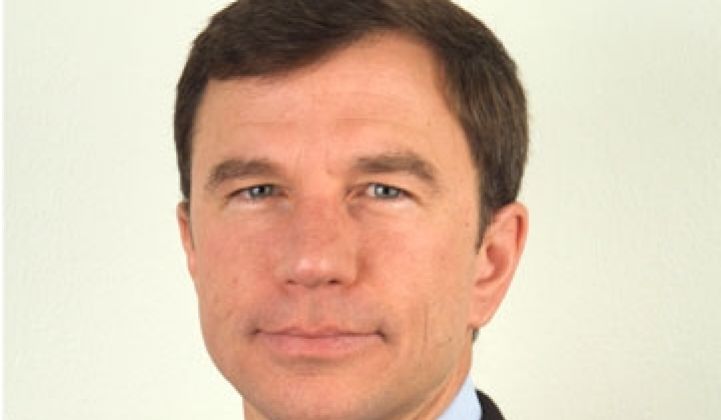Jesse Berst's Global Smart Energy and Michael Butler's Cascadia Capital have assembled this multi-part series where business leaders share their opinions on the future of the smart grid. This fourth installment features Rick Luebbe CEO, EnerG2.
Seattle-based EnerG2 is currently focused on engineering advanced nano-structured materials for energy storage breakthroughs.
Q: What is the most important next step in the development of the smart grid?
A: The first step is acknowledging that today’s grid is not suitable for our evolving requirements; we have to admit we have a problem. Then, we have to identify and better characterize the various challenges and build discrete solutions for each one of them.
For example, today’s grid has inefficiency designed into it. The "step down" from regional utility scale infrastructure to neighborhood scale introduces enormous waste, unnecessary cost and degrades reliability. Massive investment was required to construct a large scale and highly centralized transmission and distribution infrastructure. But, as demand changes and as new sources of supply (i.e., renewables) come online, that centralized infrastructure will be stretched beyond its limit. For example, what will happen when plug-in hybrids take off and everyone comes home at night and plugs in their car – right before they turn on all their lights and start the oven?
Similarly, the variability of renewable supplies means that traditional methods of dealing with power quality become obsolete. Traditionally, frequency is adjusted to compensate for constant mismatch in supply and demand. The additional unpredictability of wind and solar energy will exacerbate this challenge. Quality and reliability will start to degrade.
Technologies exist for each of these problems – in some cases, the same technologies can solve multiple problems. Distributed generation has been looked at quite a bit, for example – what about pairing that with distributed storage?
Peak demands can be addressed more easily with small, easy-to-scale sources of stored supply. Those same localized storage supplies can be used to mitigate grid-level variations in utility supply caused by increased renewable use; the neighborhood can effectively be insulated from grid-level problems. These are smaller scale solutions that can be relatively quickly rolled out – they do not need massive grid-level overhauls.
So the immediate need is to identify the problem and begin building solutions that (1) are not merely tweaks to the existing grid and (2) combine technologies at a small local level to solve multiple problems.
Those working on energy storage solutions are looking at technologies that span the spectrum of scale – it’s not just about batteries! Experts in energy storage can be a significant part of the solution.
Q: What kind of “shovel-ready” jobs can the smart grid produce?
A: The small-scale projects I mentioned above are shovel-ready. Storage is an essential part of the solution, and requires significant investment and labor resources to manufacture and deploy it. The materials that will go into these storage devices need not be imported (like Lithium is). We can make the manufacturing of storage materials for grid-modernization a key part of the growth that will reinvigorate the economy.
Q: What role should the federal government play in this transformation? What role should the states play?
A: Distributed generation and distributed storage are just that: distributed! The states have to work with their utilities to pull it off; and the federal government should direct the funds to the states to begin to roll out these projects. We cannot have a centralized entity pushing a decentralized strategy. The states -- and even the municipalities – know far better how to make this happen. The federal policy should be to fund a variety of implementations in a variety of locations and effectively enable the winners to naturally emerge.”
(Pictured above Rick Luebbe, CEO, EnerG2.)
This piece is not connected with Greentech Media News. The views expressed here are those of the authors and are not endorsed by Greentech Media.



